The press tour continues!
Late last week I sat down with Pete Wright on his podcast, The Next Reel Podcast. It’s always a pleasure to join someone in their space, but doubly so when that space is not one I typically travel within. Naturally, I had a lot of fun talking to Pete about Callsheet.
Pete did a great job of unpacking some of my thought processes while creating Callsheet, as well as why I made a bunch of the choices I did. It was great to have someone who is technical to talk to, but who comes to Callsheet more as a movie lover than an Apple nerd. Though Pete is unequivocally both.
The episode is just over 30 minutes — somehow Pete was able to keep me far more concise than I normally am! I had great fun, and I suspect you’ll enjoy it, too.
When working on Callsheet, I tried to do my best to make it accessible for users who do not have perfect vision. Thankfully, Apple has some extremely robust APIs to do this sort of thing. Further, when using SwiftUI, you get a lot of it for free.
During WWDC, I actually had a lab with some accessibility experts, who gave me a plethora of invaluable tips on how to improve Callsheet’s VoiceOver support.
This week, I was honored to have Brian Fischler ask me to join him on That Real Blind Tech Show. On the episode, we start of by discussing Brian’s appearance on the American Top Gear, but quickly get to chatting about Callsheet, its origins, and how I approached accessibility.
I’m genuinely honored that Brian offered to have me on the show, and I’m so thankful to hear that Callsheet’s accessibility affordances seem to have hit the mark.
The episode is a different spin on the standard “press tour”; I’d love it if you gave it a listen.
It’s been busy around here, between Callsheet, its first update, and the start of school for both my kids. 😱
Thus, I’m late in linking to my appearance on Mac Power Users. MPU is an absolute institution, and though this was my fifth appearance on the show, every darn time feels like an incredible honor. Plus, I revel in any excuse to talk to my pals Stephen and David.
On this episode, we discussed the genesis and launch of Callsheet, but predominantly, spent time talking about how I manage my media. Which mostly means Plex, but also Channels, HDHomeRun, and more. If you’re interested in taking control of your media, this is a great place to start.
Callsheet has been out for a little while now, and has gotten some really lovely press coverage. Both as a marketing tactic, and as a way for me to remember, here’s what I’ve seen so far:
-
John Voorhees at MacStories
Callsheet is the only app I’ve seen that lets users precisely dial in the amount of information it reveals about a TV show. -
D. Griffin Jones at Cult Of Mac
We did a video interview a month or two back, when Callsheet was still under development. You can see the video and its transcript on Cult of Mac’s site, or watch the video on YouTube. -
Chance Miller at 9to5Mac
Callsheet packs a trove of data into a wonderfully designed, fast, and easy-to-use app on iPhone and iPad. -
Stephen Hackett at 512 Pixels
Callsheet is the indie app scene at its best — taking on a huge app written by people who don’t seem to care about their users — and doing a better job at it in every single way. -
Sarah Perez at TechCrunch
In trying out the app, Callsheet is easier to use than IMDb, we found. In part, that’s because The Movie Database’s API for developers is fairly speedy, as Liss notes, but also because the app isn’t filled with so much clutter. That makes it quicker to get to the information you wanted to see, without so much searching around and tapping. -
John Gruber at Daring Fireball
I’d been vaguely wishing that there were a top-notch native iPhone TMDB app. Callsheet is that app. I’ve been beta-testing it for months, and ever since, Callsheet has been one of the few apps I use almost daily. Super-useful, super-convenient. -
Jason Snell at Six Colors
I especially appreciated Callsheet’s integration with other services. It links out to IMDB itself for trivia, and—my favorite—it uses JustWatch to provide instant information about where a movie or TV show is available to stream. He’s even got a “hide spoilers” feature to prevent you from finding out that Idris Elba isn’t actually in the last two seasons of that show of his. -
Florian Innocente at iGeneration
I was really pleased to see some international coverage! I really need to start looking into localization… -
Brent Dirks at AppAdvice
Another great feature is the ability to customize a Quick Access link on a movie or TV show page. You can choose to quickly access IMDB trivia, the Wikipedia entry, the website, where to watch, or parental guidance information. -
Candice Clark at Fagen Wasanni Technologies
Overall, Callsheet is a valuable tool for those who frequently seek information about the cast and crew behind the movies and TV shows they watch. It provides a faster and less distracting experience compared to traditional apps and websites like IMDb, allowing users to focus on the content they are watching. -
Editorial Team for the Apple App Store
Callsheet is a showbiz encyclopedia for everything you want to know about a movie or TV show. Get cast and episode info, plus discover something new to stream. Afraid of seeing spoilers? Toggle them off to avoid unintended surprises! -
David Pierce at The Verge
I hate the IMDb app and the website with the huge banner telling you about the app. Callsheet is way better: a super-fast iPhone and iPad app for looking up cast and crew in whatever you’re watching, and JustWatch integration in case you wind up finding something more interesting to watch. (This was also by far the thing I heard most about this week — thanks to everyone who sent this in!) -
Jarrod Blundy at HeyDingus
It’s unlikely that you haven’t heard about Callsheet yet this week, but I’m here to pile on the praise. I’ve been using Casey’s app throughout the beta period, and it’s been solid from day one. -
Jason Tate at Chorus.fm
Instead of suffering through the nightmare that is the IMDB app (or website), let this be the first app you open so you can get your answer and get back to the show.
Call Sheet is a great, fast-loading, easy-to-use app that does what it says it does with no superfluous crap. -
Mikah Sargent (and Rosemary Orchard) at iOS Today
This is a video show, so Mikah does a very walkthrough of the iPad app. Mikah’s segment starts at around 56 minutes. -
Jason Snell at Macbreak Weekly
Another video show, Jason has a great discussion about Callsheet, that starts just shy of two hours into the show. -
John Tornow at Air Mail
Callsheet’s best feature? The ability to hide spoilers when browsing. Not interested in learning that your favorite protagonist gets killed off after two episodes? No problem. -
Zac Hall at 9to5Mac
Anyway, Callsheet is good. Very good, actually. Callsheet is easily the most attractive and streamlined way to realize that “ahhh, that’s Carey Mulligan who played Daisy Buchanan in The Great Gatsby from 2013″ before going back to the movie you just paused. -
Jason Tate at Inc.com
Earlier this year, I had a conversation with my co-host of Primary Technology about our favorite new-ish apps. As we talked, we both immediately agreed that the app we thought deserved the title was Callsheet, from independent iOS developer Casey Liss. -
Becca Caddy at iMore
Someone in Callsheet’s reviews said “It’s like if Apple made IMDb” and I haven’t been able to stop thinking about what a perfect comparison that is. It’s no wonder Callsheet has previously won an “Editor’s Choice” award on the Apple App Store.
UPDATED 22 April 2024 1:30 PM: Added iMore post
UPDATED 27 February 2024 10:00 AM: Added Inc.com post
UPDATED 2 January 2024 05:15 PM: Added 9to5Mac end-of-year post
UPDATED 5 September 2023 04:00 PM: Added Air Mail
UPDATED 17 August 2023 08:30 AM: Added chorus.fm, iOS Today, and This Week in Tech
UPDATED 13 August 2023 03:00 PM: Added the App Store (!), The Verge (!) and HeyDingus
UPDATED 10 August 2023 10:30 AM: Added AppAdvice & Fagen Wasanni links.
UPDATED 9 August 2023 10:15 AM: Added link to iGeneration.
UPDATED 8 August 2023 7:00 PM: Added link to Six Colors.
Today, I’m overjoyed to announce the release of my latest app, Callsheet.
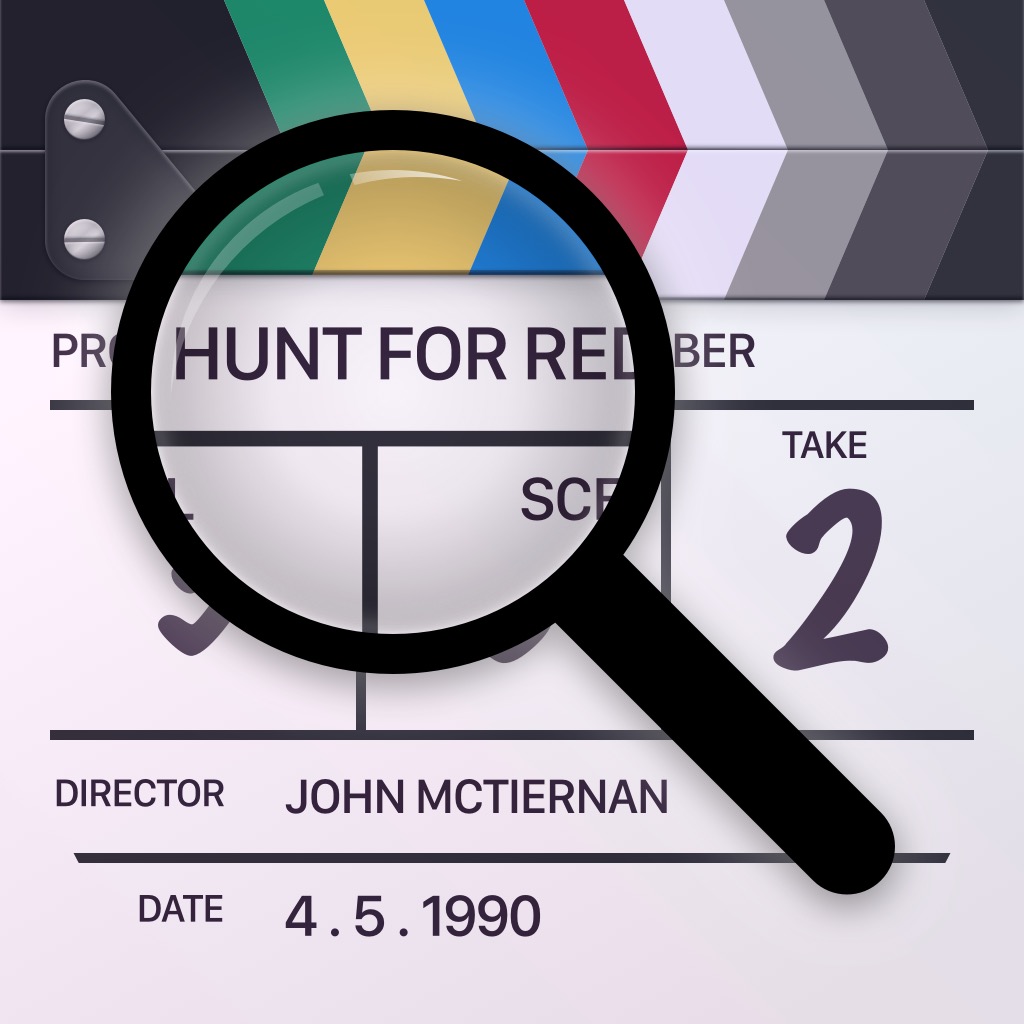
Callsheet, in short, allows you to look up movies, TV shows, cast, and crew. You can think of it as similar to the IMDb app but… with respect for its users. Which, actually, makes it not like IMDb at all. 🙃
When I watch a movie or TV show, I’m constantly trying to figure out who that actor is, who the director is, and so on. Early this year, I wanted a way to look this up that was native to iOS/iPadOS, but also fast, with no fluff that I wasn’t interested in. I wanted a bespoke version of the IMDb app.
So I wrote it. It’s called Callsheet, and I’d love for you to try it. Callsheet is a subscription-based app, and all subscription plans have a one-week free trial. Additionally, your first twenty searches are free, so you can really get a feel for it before you subscribe.
Some of my favorite features of Callsheet are quality-of-life improvements for me, and I suspect they will be for you, too.
My favorite features — other than Callsheet’s speed — are the affordances for avoiding spoilers in TV shows. If you’ve seen the amazing TV series Watchmen, you’ll know that there are characters with hidden identities. When I was watching the show back in late 2019, one secret identity was spoiled by that character’s listing in IMDb.
Never again.
In Callsheet, you can optionally enable a series of spoiler-avoidance affordances:
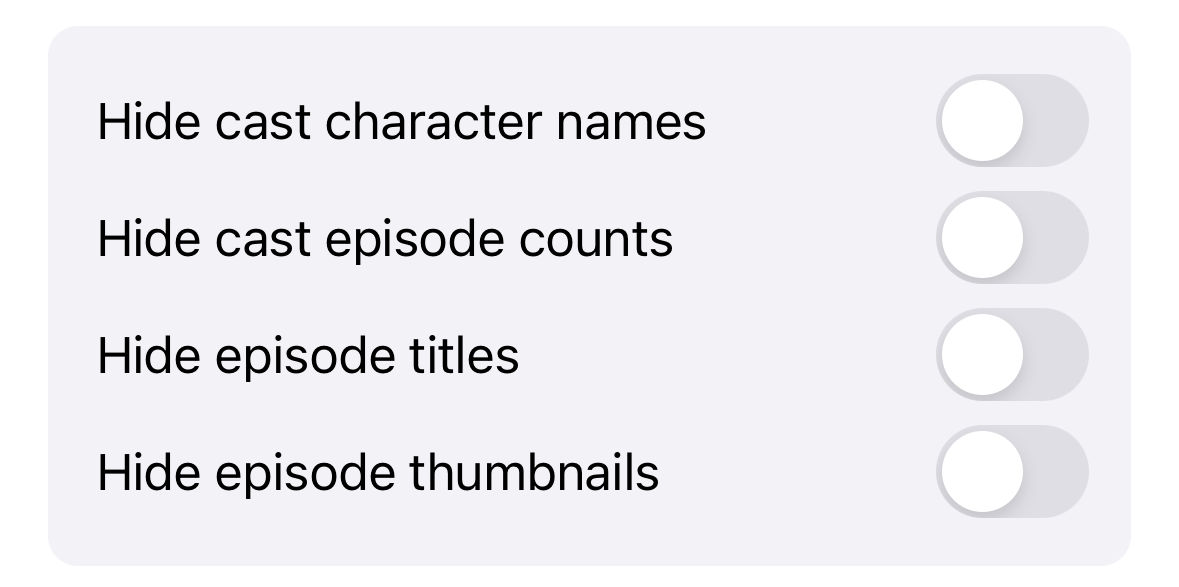
If I were to turn on just the Hide cast character names toggle, I wouldn’t get
spoiled on any secret identities:
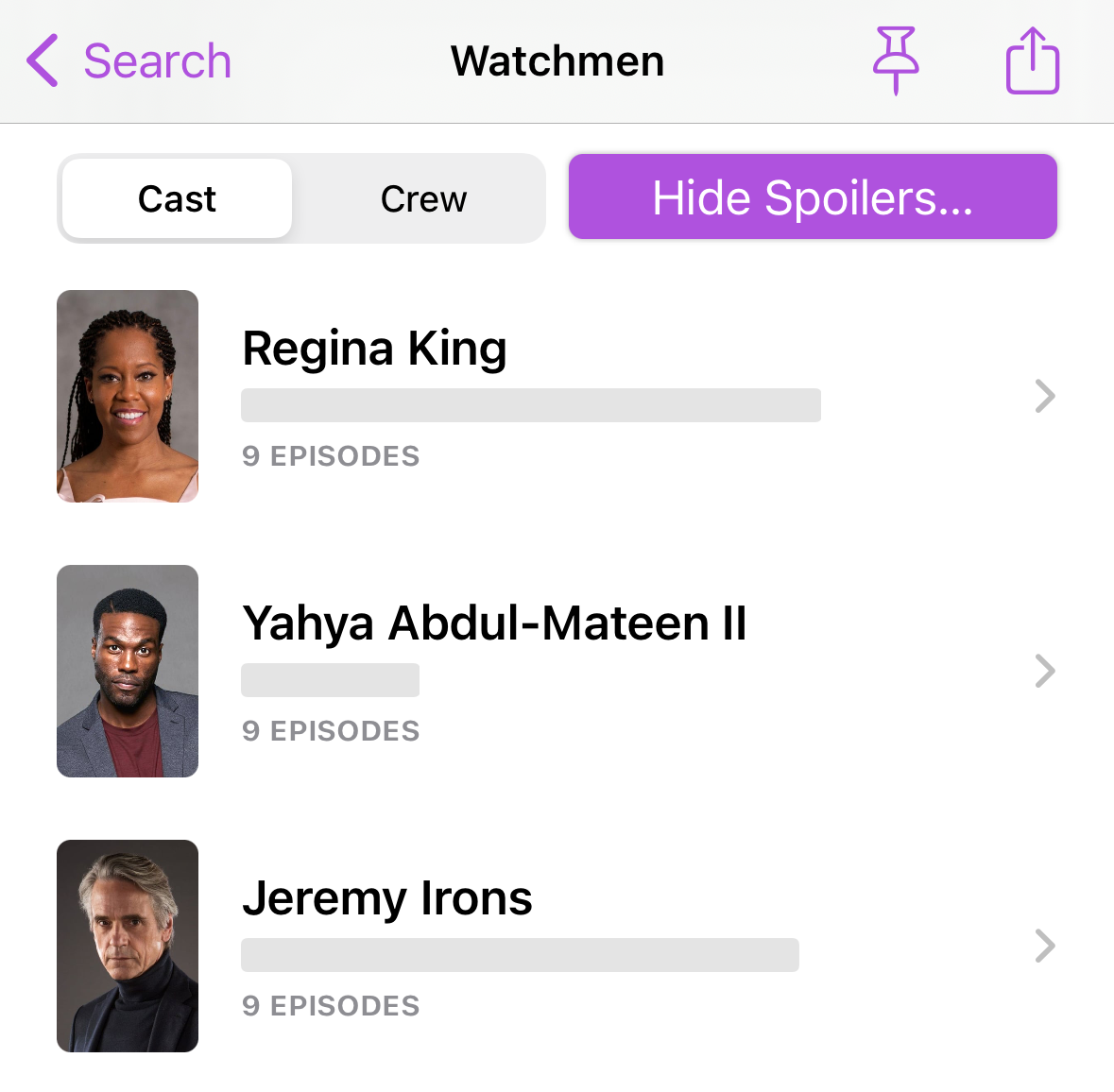
What if a character in a series is killed off after only one episode? If that
actor only appears in one episode, that’s a giveaway too. Hence the
Hide cast episode counts toggle.
Furthermore, if you’re looking at the list of episodes in a season, a poorly-chosen
thumbnail or episode title could give things away. Those are covered with the
Hide episode titles and Hide episode thumbnails options.
One of my favorite things to do when watching anything is to look at the trivia that IMDb offers. I hate that to find it in the IMDb app is a seek-and-find adventure that is often changing. In Callsheet, you can choose to place it front-and-center; it’s the speech bubble with bullets inside it:
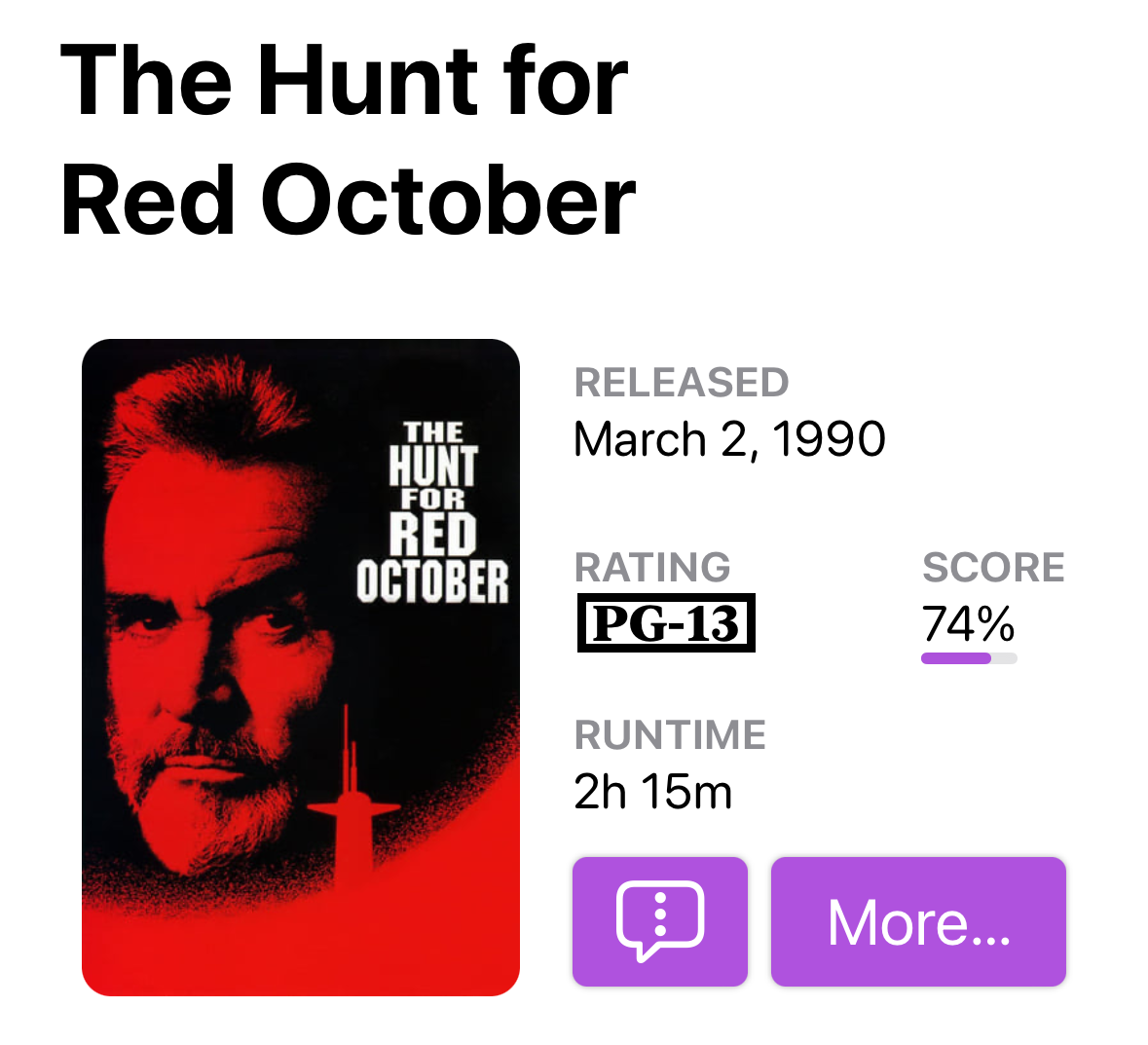
But not everyone cares about trivia. Using the Quick Access Link setting, you
can choose what button is available for quick access:
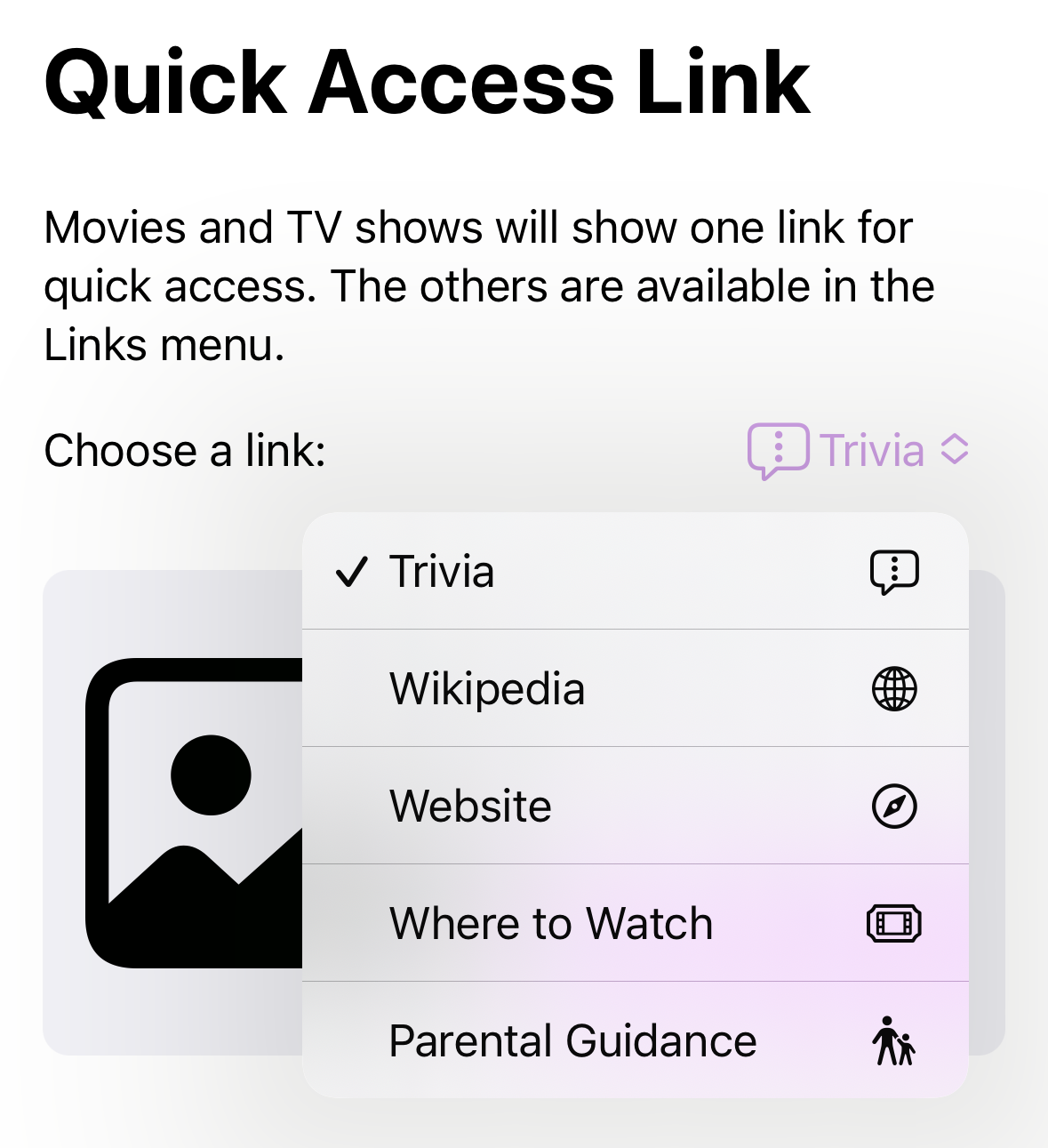
Whichever link you prefer is quickly available next to the More… button. This
includes the oft-requested-by-beta-testers Where to Watch screen:
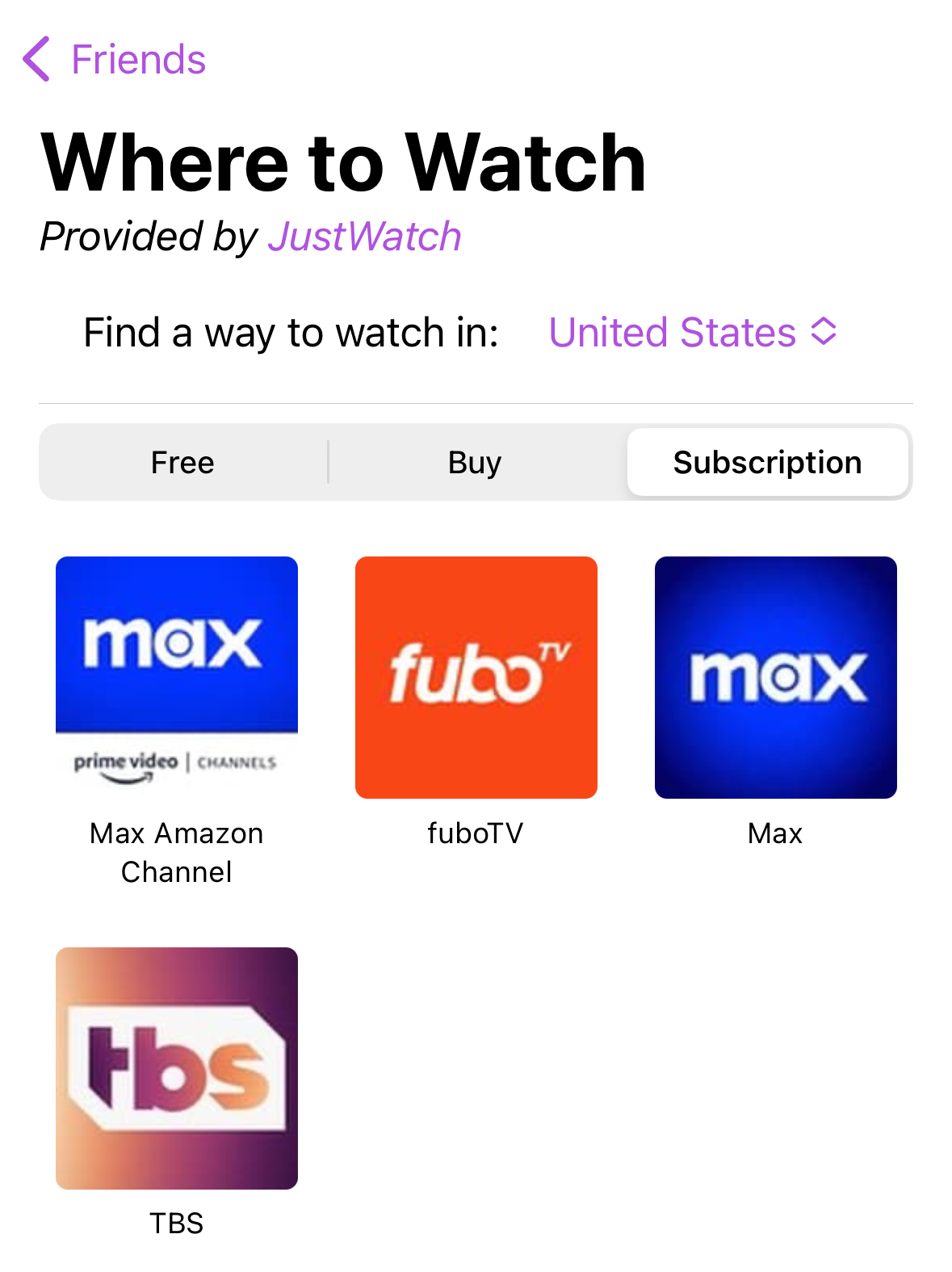
There are plenty of other useful features, like pinning items you want to refer to quickly and easily; iCloud-powered sync of your pins, spoiler preferences, and more; recent search history; locale and language customization, and more.
Callsheet supports iPhone and iPad, though improved iPad support is going to come ASAP. As mentioned, Callsheet requires a subscription, and is (at the time of this post) $1/month or $9/year.
Optionally, if you’d like to support me further, you can elect to subscribe
at $20 or $50 per year. These optional tiers, listed under the
More Purchase Options… link in the app, give you no additional perks other
than my undying love. If you enjoy the work that I do, and wish to support me
further, please feel free to choose one of those options. 😊 Again, all
subscriptions come with a 1-week free trial for new subscribers.
Callsheet uses the wonderful The Movie Database as its backend. Their API is very good, very easy to write against, and leaves little to be desired. And more importantly, it’s fast. Really fast.
An immense THANK YOU is owed to the people featured in the About Callsheet
screen in the app. My family, most importantly, for all the love and support a
guy could ever ask for. To my pal Jelly for making my craptacular icon
mockup into something gorgeous. To my pal Ste for making the screenshots,
with just the right amount of dad jokes in them. To my pal Ben for
vastly improving the way Callsheet looks. To my pal Craig for both
design and technical tips.
Also, to all the ATP members that also chose to beta test Callsheet. Having a big-ish beta testing pool was far more helpful than I ever imagined, and a lot of bugs were squashed, and features implemented, thanks to the tireless efforts of all of you. Thank you.
Some quick statistics, because I can’t help myself:
- Total commits: 727 (though there were many squashed merges)
- First commit: 30 January 2023
- Build for App Store: 27 July 2023
- Days to first release: 178 days
- Lines of code: 14,232 lines of Swift, 673 of Text/XML/Markdown, for a total of 14,905.
- Beta builds: 102
- First screenshot: Dated 3 February, and really basic
Yesterday I joined my friends Dan Moren, Mikah Sargent, and Guy English on Clockwise.
On this episode, we discussed how we manage charging, how we manage windows, how we manage weather, and how we manage travel.
Clockwise is such a change from my normal podcasts, because it’s so darned fast. Which makes it the fun kind of stressful. :)
It appears that this blog is turning into a Ted Lasso linked list and, well, I’m not sure I find that to be a problem. ⚽
Here we are, nearly at the end of the three-season run. As I write this, only one more episode left. 😢
This week I joined host Chip Sudderth and fellow guest Aleen Simms to discuss this week’s episode, Mom City. Chatting about Ted Lasso episodes is fun, even if the episodes aren’t my favorite. Mom City was a little spotty to start, but hoo boy did it get good.
There’s only one more episode of Ted Lasso left. I’ll be sad to see it go, but I’m already excited to listen to the Football is Life recap.
I’m a sucker for a guest invite to a podcast. Particularly one about Ted Lasso.
This week I joined internet pals David J. Loehr and Sarah Hendrica Bickerton to discuss this week’s episode of Ted Lasso. I felt like this one was a particularly good one, and all three of us were firing on all cylinders. There was a lot to talk about, as this season of Lasso has been… up-and-down. But we’re nearing the end, so all the varied checks that have been written will need to be cashed soon.
A good sign the episode was fun is when the source material is shorter than the recap podcast reviewing it. 😇 Whoopsie doopsie. At least we’re not that bad, right? 😆
Football is life!
Ted Lasso is back, and I swung back by the virtual offices of The Incomparable to record another episode of Football is Life, their recap podcast. On this episode, I joined host Kelly Guimont and co-panelist David J. Loehr as we discussed the episode.
This episode of the show was a long one — nearly double the length of a typical Ted Lasso episode — and as such left us a lot of room to discuss. There’s also a ton of interesting choices made by nearly every character. Naturally, this was a blast to record, especially with such wonderful co-hosts.
Ted Lasso is back, baby!
Last week I joined my pals Moisés Chiullán and Jean MacDonald to have a chat about the second episode in season three of Ted Lasso, (I Don’t Want to Go to) Chelsea.
On this episode of Football is Life, we had a lot of discussion about how one can see traces of Star Trek in this episode, how Roy Kent is wonderful, who really is the boss of KJPR, and more.
It’s always lovely to talk to Moisés and Jean, and doubly so when we get to discuss one of my favorite TV shows.